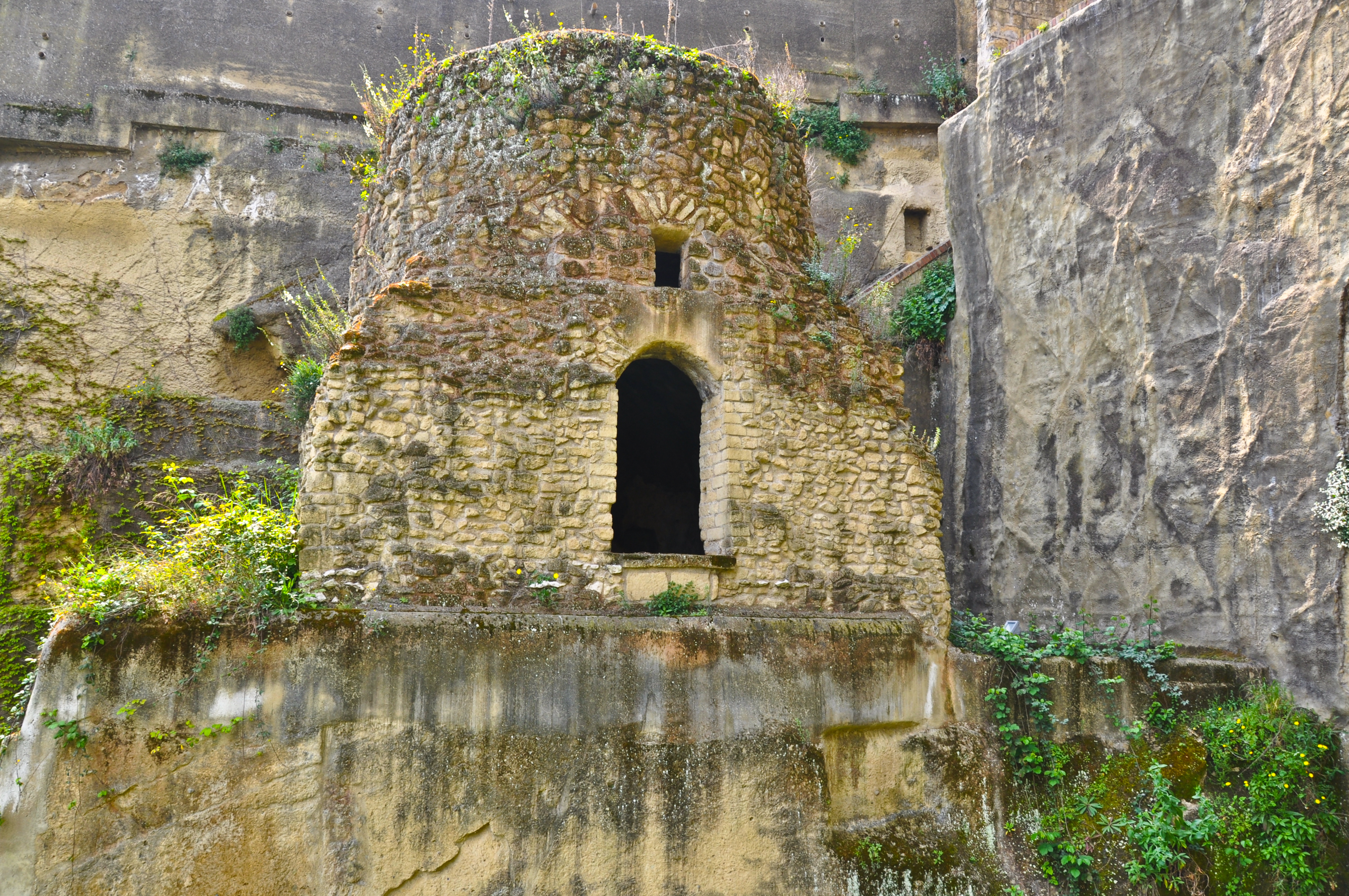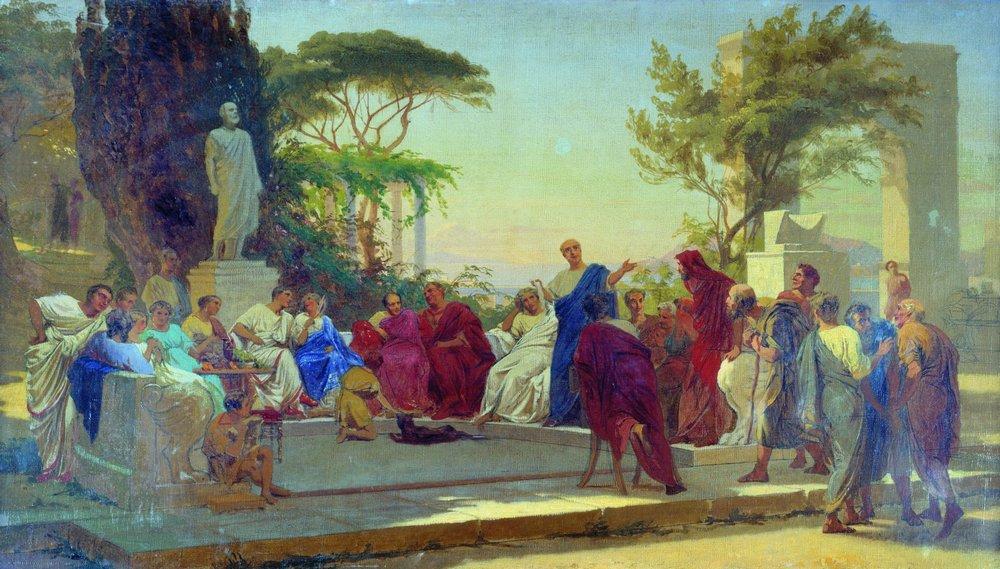|
Commodianus
Commodian (Commodianus) was a Christian Latin poet, who flourished about AD 250. The only ancient writers who mention him are Gennadius, presbyter of Massilia (end of 5th century), in his ''De scriptoribus ecclesiasticis'', and an author once thought to be Pope Gelasius in '' De libris recipiendis et non recipiendis'', in which his works are classed as ''Apocryphi'', probably on account of certain heterodox statements contained in them. Commodianus is supposed to have been from Roman Africa, partly on the ground of his similarity to Cyprian, partly because the African school was the chief center of Christian Latinity in the third century; a Syrian origin has also been suggested. As he himself tells us, he was originally a pagan, but was converted to Christianity when advanced in years, and felt called upon to instruct the ignorant in the truth. He was the author of two extant works of poetry, ''Instructiones'' and ''Carmen apologeticum'' ( first published in 1852 by J. B. Pitra ... [...More Info...] [...Related Items...] OR: [Wikipedia] [Google] [Baidu] |
Latin Rhythmic Hexameter
The Latin rhythmic hexameter or accentual hexameter is a kind of Latin dactylic hexameter which arose in the Middle Ages alongside the metrical kind. The rhythmic hexameter did not scan correctly according to the rules of classical prosody; instead it imitated the approximate sound of a typical metrical hexameter by having roughly the same number of syllables and putting word accents in approximately the same places in the line. The rhythmic hexameter flourished between the 3rd and 9th century A.D. The earliest examples come from what is now Tunisia in north Africa. One poet to use it for literary compositions was Commodian, who is thought to have lived in North Africa in the 3rd century A.D. Other examples come from Portugal, Spain, Lombardy in northern Italy, and southern France. Several examples are found on tombstones, but there is also an anonymous Christian work of the 6th or 7th century called , and a book of riddles of the 8th century. Over the centuries the style of the ... [...More Info...] [...Related Items...] OR: [Wikipedia] [Google] [Baidu] |
Christians
A Christian () is a person who follows or adheres to Christianity, a monotheistic Abrahamic religion based on the life and teachings of Jesus Christ. Christians form the largest religious community in the world. The words '' Christ'' and ''Christian'' derive from the Koine Greek title (), a translation of the Biblical Hebrew term '' mashiach'' () (usually rendered as ''messiah'' in English). While there are diverse interpretations of Christianity which sometimes conflict, they are united in believing that Jesus has a unique significance. The term ''Christian'' used as an adjective is descriptive of anything associated with Christianity or Christian churches, or in a proverbial sense "all that is noble, and good, and Christ-like." According to a 2011 Pew Research Center survey, there were 2.3 billion Christians around the world, up from about 600 million in 1910. Today, about 37% of all Christians live in the Americas, about 26% live in Europe, 24% live in sub-Saharan Afric ... [...More Info...] [...Related Items...] OR: [Wikipedia] [Google] [Baidu] |
Antichrist
In Christian eschatology, Antichrist (or in broader eschatology, Anti-Messiah) refers to a kind of entity prophesied by the Bible to oppose Jesus in Christianity, Jesus Christ and falsely substitute themselves as a savior in Christ's place before the Second Coming. The term ''Antichrist'' (including one plural form)First Epistle of John, 1 John ; . Second Epistle of John, 2 John . is found four times in the New Testament, solely in the First Epistle of John, First and Second Epistle of John. Antichrist is announced as one "who denies the Father and the Son." The similar term ''pseudokhristos'' or "false Christ" is also found in the Gospels. In Gospel of Matthew, Matthew (Matthew 24#Jesus predicts the destruction of the Temple, chapter 24) and Gospel of Mark, Mark (Mark 13, chapter 13), Jesus alerts his disciples not to be deceived by the False prophet#Christianity, false prophets, who will claim themselves to be the Christ (title), Christ, performing "great Sign#Christianity, signs ... [...More Info...] [...Related Items...] OR: [Wikipedia] [Google] [Baidu] |
3rd-century Poets
The 3rd century was the period from AD 201 (represented by the Roman numerals CCI) to AD 300 (CCC) in accordance with the Julian calendar. In this century, the Roman Empire saw a crisis, starting with the assassination of the Roman Emperor Severus Alexander in 235, plunging the empire into a period of economic troubles, barbarian incursions, political upheavals, civil wars, and the split of the Roman Empire through the Gallic Empire in the west and the Palmyrene Empire in the east, which all together threatened to destroy the Roman Empire in its entirety, but the reconquests of the seceded territories by Emperor Aurelian and the stabilization period under Emperor Diocletian due to the administrative strengthening of the empire caused an end to the crisis by 284. This crisis would also mark the beginning of Late Antiquity. While in North Africa, Roman rule continued with growing Christian influence, particularly in the region of Carthage. In Persia, the Parthian Empire was suc ... [...More Info...] [...Related Items...] OR: [Wikipedia] [Google] [Baidu] |
Ancient Roman Writers
Ancient history is a time period from the beginning of writing and recorded human history through late antiquity. The span of recorded history is roughly 5,000 years, beginning with the development of Sumerian cuneiform script. Ancient history covers all continents inhabited by humans in the period 3000 BCAD 500, ending with the expansion of Islam in late antiquity. The three-age system periodises ancient history into the Stone Age, the Bronze Age, and the Iron Age, with recorded history generally considered to begin with the Bronze Age. The start and end of the three ages vary between world regions. In many regions the Bronze Age is generally considered to begin a few centuries prior to 3000 BC, while the end of the Iron Age varies from the early first millennium BC in some regions to the late first millennium AD in others. During the time period of ancient history, the world population was exponentially increasing due to the Neolithic Revolution, which was in full prog ... [...More Info...] [...Related Items...] OR: [Wikipedia] [Google] [Baidu] |
Church Fathers
The Church Fathers, Early Church Fathers, Christian Fathers, or Fathers of the Church were ancient and influential Christian theologians and writers who established the intellectual and doctrinal foundations of Christianity. The historical period in which they worked became known as the Patristics, Patristic Era and spans approximately from the late 1st to mid-8th centuries, flourishing in particular during the 4th and 5th centuries, when Christianity was in the process of establishing itself as the State church of the Roman Empire, state church of the Roman Empire. For many denominations of Christianity, the writings of the Ante-Nicene Fathers, Nicene Fathers and Christianity in the 5th century#Post-Nicene Fathers, Post-Nicene Fathers are included in Sacred tradition, Sacred Tradition. As such, in traditional dogmatic theology, authors considered Church Fathers are treated as authoritative for the establishment of doctrine. The academic field of patristics, the study of the Chu ... [...More Info...] [...Related Items...] OR: [Wikipedia] [Google] [Baidu] |
The Latin Library
The Latin Library is a website that collects public domain Latin texts. It is run by William L. Carey, adjunct professor of Latin and Roman Law at George Mason University. The texts have been drawn from different sources, are not intended for research purposes nor as substitutes for critical editions, and may contain errors. There are no translations at the site. See also *Latin literature Latin literature includes the essays, histories, poems, plays, and other writings written in the Latin language. The beginning of formal Latin literature dates to 240 BC, when the first stage play in Latin was performed in Rome. Latin literatur ... * Corpus Corporum * Library of Latin Texts References External links * {{DEFAULTSORT:Latin Library Latin-language literature Computing in classical studies American digital libraries ... [...More Info...] [...Related Items...] OR: [Wikipedia] [Google] [Baidu] |
Lucretius
Titus Lucretius Carus ( ; ; – October 15, 55 BC) was a Roman poet and philosopher. His only known work is the philosophical poem '' De rerum natura'', a didactic work about the tenets and philosophy of Epicureanism, which usually is translated into English as ''On the Nature of Things''—and somewhat less often as ''On the Nature of the Universe''. Very little is known about Lucretius's life; the only certainty is that he was either a friend or client of Gaius Memmius, to whom the poem was addressed and dedicated. ''De rerum natura'' was a considerable influence on the Augustan poets, particularly Virgil (in his ''Aeneid'' and ''Georgics'', and to a lesser extent on the '' Eclogues'') and Horace. The work was almost lost during the Middle Ages, but was rediscovered in 1417 in a monastery in Germany by Poggio Bracciolini and it played an important role both in the development of atomism (Lucretius was an important influence on Pierre Gassendi) and the efforts of ... [...More Info...] [...Related Items...] OR: [Wikipedia] [Google] [Baidu] |
Virgil
Publius Vergilius Maro (; 15 October 70 BC21 September 19 BC), usually called Virgil or Vergil ( ) in English, was an ancient Rome, ancient Roman poet of the Augustan literature (ancient Rome), Augustan period. He composed three of the most famous poems in Latin literature: the ''Eclogues'' (or ''Bucolics''), the ''Georgics'', and the Epic poetry, epic ''Aeneid''. A number of minor poems, collected in the ''Appendix Vergiliana'', were attributed to him in ancient times, but modern scholars generally regard these works as spurious, with the possible exception of a few short pieces. Already acclaimed in his own lifetime as a classic author, Virgil rapidly replaced Ennius and other earlier authors as a standard school text, and stood as the most popular Latin poet through late antiquity, the Middle Ages, and early modernity, exerting inestimable influence on all subsequent Western literature. Geoffrey Chaucer assigned Virgil a uniquely prominent position among all the celebrities ... [...More Info...] [...Related Items...] OR: [Wikipedia] [Google] [Baidu] |
Horace
Quintus Horatius Flaccus (; 8 December 65 BC – 27 November 8 BC), Suetonius, Life of Horace commonly known in the English-speaking world as Horace (), was the leading Roman lyric poet during the time of Augustus (also known as Octavian). The rhetorician Quintilian regarded his '' Odes'' as the only Latin lyrics worth reading: "He can be lofty sometimes, yet he is also full of charm and grace, versatile in his figures, and felicitously daring in his choice of words."Quintilian 10.1.96. The only other lyrical poet Quintilian thought comparable with Horace was the now obscure poet/metrical theorist, Caesius Bassus (R. Tarrant, ''Ancient Receptions of Horace'', 280) Horace also crafted elegant hexameter verses ('' Satires'' and '' Epistles'') and caustic iambic poetry ('' Epodes''). The hexameters are amusing yet serious works, friendly in tone, leading the ancient satirist Persius to comment: "as his friend laughs, Horace slyly puts his finger on his every fault; once let ... [...More Info...] [...Related Items...] OR: [Wikipedia] [Google] [Baidu] |
Romance Languages
The Romance languages, also known as the Latin or Neo-Latin languages, are the languages that are Language family, directly descended from Vulgar Latin. They are the only extant subgroup of the Italic languages, Italic branch of the Indo-European languages, Indo-European language family. The five list of languages by number of native speakers, most widely spoken Romance languages by number of native speakers are: * Spanish language, Spanish (489 million): official language in Spain, Mexico, Equatorial Guinea, the Sahrawi Arab Democratic Republic, SADR, Cuba, Dominican Republic, Puerto Rico and most of Central America, Central and South America * French language, French (310 million): official in 26 countries * Portuguese language, Portuguese (240 million): official in Portugal, Brazil, Portuguese-speaking African countries, Portuguese-speaking Africa, Timor-Leste and Macau * Italian language, Italian (67 million): official in Italy, Vatican City, San Marino, Switzerland; mi ... [...More Info...] [...Related Items...] OR: [Wikipedia] [Google] [Baidu] |








